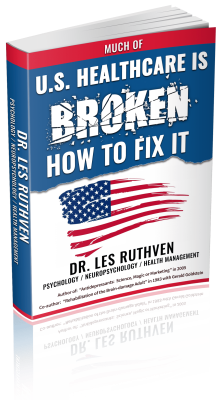Last updated on January 8th, 2024 at 10:20 am
Brief summary of what we now know about the RIA from the research and clinical practice so far.
Fifty-five Wichita State University college student, age 19 to 58, roughly 50 % male and female, took the RIA 3 times in a 13 day period, each testing separated by at least 24 hours. 15 students took the RIA by accessing the test online and 40 students took the test with assistance from a test monitor who gave the Subjects minimum instructions.
There was no performance difference between the two groups and their scores were combined.
There were no gender differences on any of the 5 tasks and only a slight memory loss due to age. There were no group performance differences on any of the 3 test sessions and norms have been published for test session # 1. There seems to be little or any performance improvement with serial testing.
Clinical use finds the first 4 tasks (simple RT, complex RT, conditional RT, memory) may be implicated in reversible or irreversible brain impairment but task 5, anticipatory thinking/executive functioning, must be impaired for a diagnosis of either static or progressive structural brain damage depending on the test profile.
Dr. Gerald Goldstein, a former president of NAN and first author of the normative study, believed that the RIA has a lower cognitive impairment floor than comprehensive neuropsych testing. If Dr. Goldstein was correct the RIA may open a new field of reversible brain impairment.
A bright woman complaining of memory problems showed memory and speed of mental processing difficulty but her anticipatory skills were above college norms and the diagnosis was reversible brain impairment.
The suspected cause was 50 mg daily of the antidepressant Celexa for diagnosed ADD and when the Celexa was tapered her memory problem had resolved.
A 64 year old man with a doctoral degree took the RIA and showed the greatest impairment on task #5 (the most challenging task called anticipatory thinking) and lesser impairment on the first 4 tasks (including memory); subsequent neuropsych testing of the patient diagnosed a frontal-temporal lobe progressive dementia.
A 17 year old female cheerleader with 2 possible concussions and school performance difficulties demonstrated variable motivation in performing the tasks (her RIA performance was neither consistently normal nor impaired); subsequent neuropsych testing found the same variable motivation in performing the various tests and there was no evidence of residuals from a concussion.
A pilot study with 10 college educated, young adult social drinkers took the RIA under conditions of no alcohol and then alcohol. The alcohol dosing of these social drinkers varied from 0.08 BAC (blood alcohol content) to 0.145 BAC in the 10 subjects. Under the alcohol condition simple RT was the only measure found in the impaired range in the 5 tasks.
In the group there were spotty but inconsistent individual impairments on all five tasks (unlike the normative subjects) but the group mean on anticipatory thinking was in the non-impaired range!
Field sobriety testing for DWI is heavily concentrated in the motor sphere (e.g., finger to nose, walk a straight line) and perhaps the thinking is that severe motor dysfunction is probably highly correlated with higher level abilities such as judgmental and other higher level skills.
This pilot study results suggest a DWI charge might be more valid at a BAC of 0.150 and above to insure that higher cognitive skills are involved in the impaired driving.
Suggested further research with the RIA.
- The author suggests the next step would be to expand RIA testing downward from age eighteen to age 10 or 11 for children with adequate computer skills. I would suggest working with school psychologists to conduct the testing of seemingly cognitively normal children but at the same time test children who have been diagnosed with ADHD, those on Adderall and those ADHD children not taking psychiatric medications. Does Adderall reduce Ci in these ADHD children and teens or does Adderall produce a net increase in the child’s Ci! There is research evidence that long term use of Adderall can result in dementia and even the FDA warns of this possibility. Some of the above would require serial testing with the RIA.
- For more than 30 years some patients on chemotherapy, psychiatric and other drugs complain of memory or “brain fog” problems and physicians often attribute these complaints to depression or other sources than the drugs themselves. There is a need of pilot studies to (1) test these patients complaining of cognitive problems with the RIA and (2) do pre-RIA testing and serial testing before patients are prescribed psychiatric drugs, cancer drugs, opioids, steroids, antidementia drugs, and antipsychotic drugs to treat so called Treatment Resistant Depression (TRD) and others.
Except for the need to expand the normative data with respect to age and the various intellectual levels the other research that needs addressing will depend on factors unknown at this time.
Computer literate persons in a health plan might take the RIA to establish a cognitive baseline and serial RIA testing twice yearly for earlier identification of any future Ci if it arises.
In addition to the RIA test the test site includes an optional health and prescription drug history and a 10 item symptom and behavior scale; the latter gives the clinician a broader range of information about the subject for diagnostic purposes.
The RIA is available to psychologists and physicians at no cost to evaluate the RIA for possible research and clinical use.


